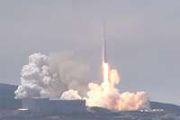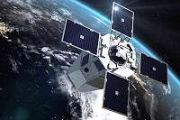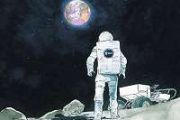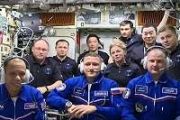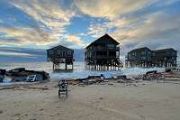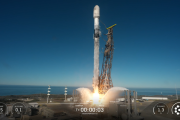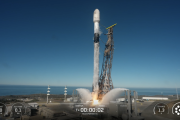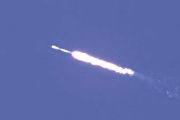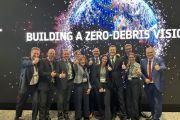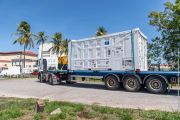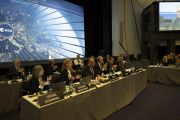
Copernical Team
Rocket Lab to Acquire Geost in Strategic Expansion into Satellite Payloads
 Rocket Lab Corporation (Nasdaq: RKLB) has entered into a definitive agreement to acquire the parent company of Geost, LLC, a specialist in electro-optical and infrared (EO/IR) payloads for national security missions. The $275 million deal includes $125 million in cash and $150 million in Rocket Lab stock, with an additional $50 million possible through performance-based earnouts. The acquisition
Rocket Lab Corporation (Nasdaq: RKLB) has entered into a definitive agreement to acquire the parent company of Geost, LLC, a specialist in electro-optical and infrared (EO/IR) payloads for national security missions. The $275 million deal includes $125 million in cash and $150 million in Rocket Lab stock, with an additional $50 million possible through performance-based earnouts. The acquisition From Rice to orbit: Student engineers build safer, low-cost satellite thruster
 By the end of the decade, the global small satellite industry is projected to nearly double. Small satellites are critical for faster, better and more secure communications and internet solutions as well as environmental sensing, weather monitoring and national security.
A team of Rice University engineering students has designed and built a safer, low-cost propulsion module for small sate
By the end of the decade, the global small satellite industry is projected to nearly double. Small satellites are critical for faster, better and more secure communications and internet solutions as well as environmental sensing, weather monitoring and national security.
A team of Rice University engineering students has designed and built a safer, low-cost propulsion module for small sate Camouflage strategy developed for stealth and thermal control of satellites in infrared spectrum
 In response to the sharp rise in satellite deployments-now exceeding 9,850 globally-scientists are racing to protect these valuable assets from ground-based detection, particularly in the infrared spectrum. While visible and microwave detection have constraints, infrared sensors exploit low background radiation, making satellites highly vulnerable.
Addressing this issue, researchers led by
In response to the sharp rise in satellite deployments-now exceeding 9,850 globally-scientists are racing to protect these valuable assets from ground-based detection, particularly in the infrared spectrum. While visible and microwave detection have constraints, infrared sensors exploit low background radiation, making satellites highly vulnerable.
Addressing this issue, researchers led by How chaotic planet formation may explain wide-orbit worlds like Planet Nine
 In the remote edges of planetary systems, far beyond the range of traditional planet-forming regions, astronomers have long grappled with the mystery of wide-orbit planets. These gas giants and planetary-mass bodies orbit hundreds to thousands of astronomical units (AU) from their stars, raising fundamental questions about their origins. A new study led by Rice University and the Planetary Scien
In the remote edges of planetary systems, far beyond the range of traditional planet-forming regions, astronomers have long grappled with the mystery of wide-orbit planets. These gas giants and planetary-mass bodies orbit hundreds to thousands of astronomical units (AU) from their stars, raising fundamental questions about their origins. A new study led by Rice University and the Planetary Scien Politecnico di Milano to help chart Apophis asteroid during 2028 deep space mission
 Politecnico di Milano is gearing up for a return to deep space as part of the European Space Agency's 2028 RAMSES mission, which will study the near-Earth asteroid Apophis during its exceptionally close approach on 13 April 2029.
Apophis, a 350-meter-wide asteroid, will pass within 31,000 kilometers of Earth-closer than many satellites in geostationary orbit. ESA has selected Politecnico's
Politecnico di Milano is gearing up for a return to deep space as part of the European Space Agency's 2028 RAMSES mission, which will study the near-Earth asteroid Apophis during its exceptionally close approach on 13 April 2029.
Apophis, a 350-meter-wide asteroid, will pass within 31,000 kilometers of Earth-closer than many satellites in geostationary orbit. ESA has selected Politecnico's Czech Republic eyes astronaut mission through Axiom Space collaboration
 The Czech Republic has taken a significant step toward launching a national astronaut into space by submitting a Letter of Intent (LOI) to Axiom Space. Signed by Minister of Transport Martin Kupka, the LOI signals the country's commitment to participating in a future human spaceflight mission with the commercial spaceflight company.
The move builds upon an earlier Memorandum of Understandi
The Czech Republic has taken a significant step toward launching a national astronaut into space by submitting a Letter of Intent (LOI) to Axiom Space. Signed by Minister of Transport Martin Kupka, the LOI signals the country's commitment to participating in a future human spaceflight mission with the commercial spaceflight company.
The move builds upon an earlier Memorandum of Understandi Estrack - Half a century of European satellite tracking
2025 marks a landmark year for Europe’s ‘bridge between Earth and space’. The European Space Agency’s Estrack satellite tracking network turns 50.
Since its inception in 1975, Estrack – ESA’s global network of ground stations – has formed the vital communication bridge between satellites in orbit and mission control at the European Space Operations Centre (ESOC) in Darmstadt, Germany.
Now comprising six stations spanning six countries, Estrack has grown into a strategic asset for Europe, enabling communication with spacecraft, transmitting commands and receiving scientific data.
The network keeps an eye on satellites no matter their location:
Starship megarocket blows up over Indian Ocean in latest bumpy test
This request seems a bit unusual, so we need to confirm that you're human. Please press and hold the button until it turns completely green. Thank you for your cooperation!
Press and hold the button
If you believe this is an error, please contact our support team.
185.132.36.159 : f59cb791-21a1-4cd9-ac0a-b42691ab
How to capture Moon landing videos – from grainy to HD

The next time astronauts land on the Moon, we will watch it in high-definition. The transmission will be in colour, digital and at up to 60 frames per second.
After brief X outage, Musk says refocusing on businesses
 Social media platform X was hit by a two-hour outage Saturday, prompting owner Elon Musk to say he needs to spend more time focusing on his companies.
His statement echoed comments earlier this month suggesting he would reduce his role in US President Donald Trump's administration.
The world's richest person has an extraordinarily full plate as owner/CEO of X, xAI (developer of the AI-po
Social media platform X was hit by a two-hour outage Saturday, prompting owner Elon Musk to say he needs to spend more time focusing on his companies.
His statement echoed comments earlier this month suggesting he would reduce his role in US President Donald Trump's administration.
The world's richest person has an extraordinarily full plate as owner/CEO of X, xAI (developer of the AI-po 
